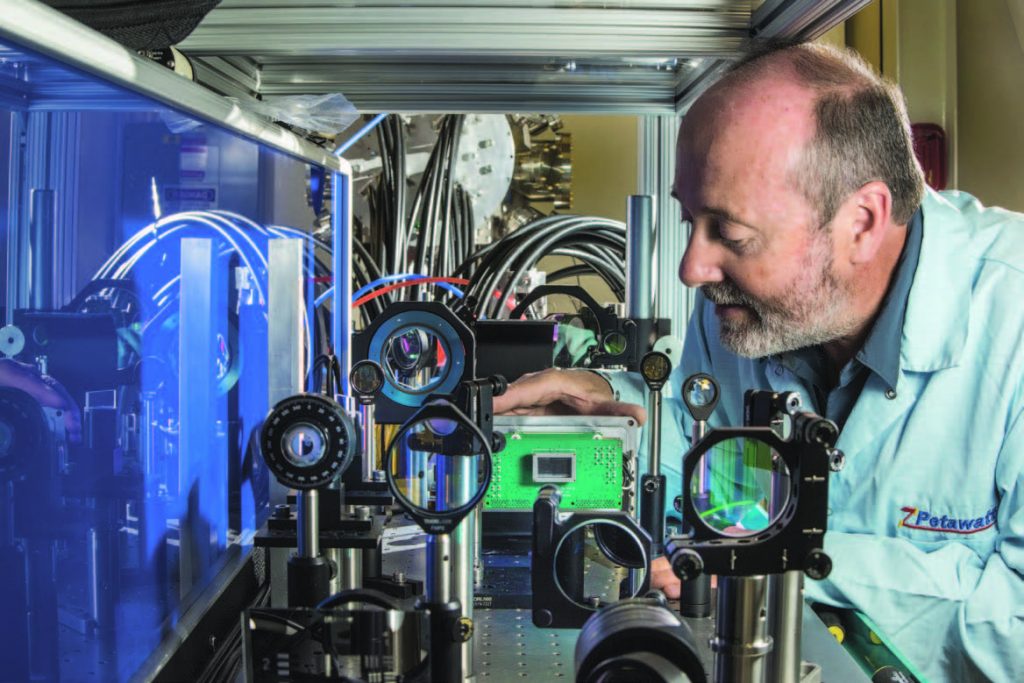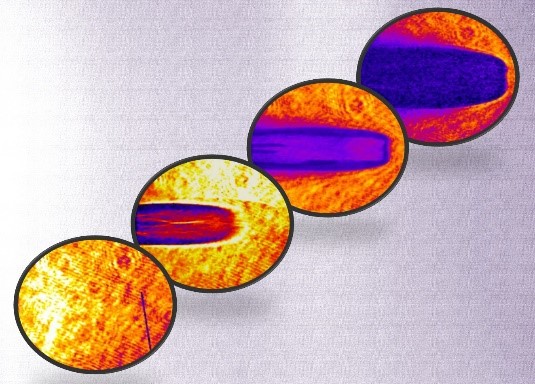Ultra-Fast Digital X-Ray Imager
High Energy Density (HED) physics and inertial confinement fusion experiments rely on successively monitored images for data collection

High Energy Density (HED) physics and inertial confinement fusion experiments rely on successively monitored images for data collection. Currently, gated X-ray imaging and spectroscopy in the 0.1-10 nanosecond (ns) time scale in HED physics utilize Micro-Channel Plate (MCP) detectors. Unfortunately, MCP detectors suffer from small to moderate dynamic range, difficulty in calibration, and can only capture a single frame along each line of site. HED experiments carried out at Sandia’s Z-Machine facility led to the development of the Ultra-Fast Digital X-Ray Imager (UXI)—a high speed, multiframe, time-gated Read Out Integrated Circuit (ROIC)—as a more efficient replacement for MCP detectors. UXI is capable of taking images with an exposure time of only 1.5 ns, and taking extremely close sequential images within the same experiment.

UXI was developed to take two, 2 ns X-ray images with high, 25 µm, spatial resolution. It consists of a 1024 x 448-pixel array of 25 µm pixels with two frames of 1.5 million electron in-situ pixel storage, the associated readout decode circuitry, parallel output analog buffering for pixel data read off and high-speed timing generation and distribution blocks. The system is designed to be completely configurable based on the specific experimenters needs. Various shutter speeds can be set based on experiment parameters, as well as scalability to a greater number of frames for future iterations of imagers. The current silicon detector used on Furi is sensitive to 4-6 keV X-rays or 532 nm visible light. The detector is bonded to the ROIC using a 3-dimensional interconnect. This allows different detectors to be bonded to the ROIC enabling the camera to be used in a wider area of applications. This novel high-speed camera will allow researchers the new ability to view a succession of chemical, nuclear, or biological reactions that occur in nanoseconds—making it a valuable research tool for industry or universities.
Image captions: (Left) Sandia National Laboratories physicist John Porter carefully sets in place an ultrafast multiframe digital X-ray camera — the fastest in the world — in Sandia’s Z-beamlet laser facility.Photo by Randy Montoya. (Right) Four images taken at two-nanosecond intervals by two UXI cameras show the evolution of a blast wave in laser-heated gas.
- Sequential X-ray backlighting images for experiments
- First full sized ROIC fabricated for a planned suite of time-gated, multi-frame, burst mode, high speed imagers
- Less costly
- Configurable to meet experiment parameters
- High Energy Density physics
- Inertial Confinement Fusion experiments
- Any experiment requiring multiple high speed X-ray back-lit images
- R&D 100 Winner: 2018
- World’s fastest multiframe digital X-ray camera created at Sandia
Sandia National Laboratories media release (June 2, 2016)
SD#13472
Published10/19/2016
Last Updated10/19/2016